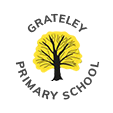Design and Technology
Vision:
At Grateley Primary School, Design and Technology and has been carefully planned to ensure that children's skills and knowledge in design, structures, mechanisms, electrical control and a range of materials, including food is developed. Our curriculum encourages children's creativity and analytical skills; through all our design and technology projects we follow a ‘Design, Make, Evaluate’ approach to the teaching and learning of Design and Technology.
From the youngest children in Early Years, who are encouraged to explore, use and refine a variety of artistic effects through aspiration 8 and Aspiration 4 where they using smaller hand held tools to children in KS1 who explore mechanisms through wheels and axles, making puppets in textiles and create healthy smoothies through food technology.
In KS2 the children will build upon their learning in KS1 and continue to develop their design skills using a range of mechanical and electrical systems. Lower Key Stage 2 will learn how to make a pneumatic toy and will continue their learning in food technology to adapt a recipe.
In upper KS2, children will continue use their knowledge in textiles from KS1 to create a mitten with appendages and in food tech they will learn how to create a simple meal.
Furthermore, children through school are taught cooking and nutrition in every year group through the curriculum and we provide a curriculum which enables children to make healthy eating choices. We believe teaching pupils to cook is an important part of promoting a whole school approach to health and wellbeing and attainment, helping us achieve high standards as a Healthy School. A key focus at Grateley through high quality inclusive practise is introducing and explicitly teaching appropriate vocabulary.
“Design is not just what it looks like and how it feels. Design is how it works.” Steve Jobs.
Intent:
The Design and Technology curriculum meets the Statutory Guidance from Year 1-6.
Design and Technology curriculum provides an immersive experience for children, whereby they acquire knowledge and skills through the curriculum. Children should be inspired by engineers, designers’ chefs, and architects to enable them to design a range of structures, mechanisms, textiles, electrical systems and food products with a real life purpose considering the needs, wants and values of themselves and others.
We believe in the importance of children learning life skills for Modern Life in Britain, therefore we have built into the essential knowledge the importance of children learning about nutrition and cooking in every year group.
Grateley believes in being part of the community so we enable children to research the ingredients they are going to require. This also enables the children to think about the recipe, ingredients and the cost.
The Grateley values are taught through the opportunity to learn about design, structures, mechanisms, electrical control and a range of materials including food. Through this the children learn about the values of teamwork, excellence and enthusiasm.
Implementation:
Early Years:
Children should have the opportunity to return to and build on their previous learning, refining ideas and developing their ability to represent them. Create collaboratively, sharing ideas, resources and skills.
Develop their small motor skills so that they can use a range of tools competently, safely and confidently. Suggested tools: pencils for drawing and writing, paintbrushes, scissors, knives, forks and spoons.
Select and use technology for particular purposes and safely use a variety of materials, tools and techniques. Design and Technology is linked to Aspiration 8. Will explore, use and refine a variety of artistic effects and aspiration 5. Show an aptitude for using smaller hand held tools.
KS1 and KS2:
Design - design purposeful, functional, appealing products for themselves and other users based on design criteria
Generate, develop, model and communicate their ideas through talking, drawing templates, mock-ups and, where appropriate, information and communication technology
Make - select from and use a range of tools and equipment to perform practical tasks [for example, cutting, shaping, joining and finishing]
Select from and use a wide range of materials and components, including construction materials, textiles and ingredients, according to their characteristics.
Evaluate - explore and evaluate a range of existing products. Evaluate their ideas and products against design criteria Technical knowledge. Build structures, exploring how they can be made stronger, stiffer and more stable. Explore and use mechanisms [for example, levers, sliders, wheels and axles], in their products Cooking and nutrition - Use the basic principles of a healthy and varied diet to prepare dishes. Understand where food comes from.
The implementation of outcomes have been planned to link with a project or as a stand-alone unit depending on whether there are cross curricular links.
Impact:
The Design and Technology curriculum is progressive, and provides purpose and meaning for children.
Children will use Design Technology in Reception as part of their daily life at school to apply skills taught. For example, funky fingers (Reception), junk modelling, construction area etc.
Across each unit of learning, all children will be given the opportunity to design, make and evaluate and children are encouraged to consider purpose when making any products.
In KS1 and KS2, technical knowledge (structures) is also covered at least once.
In Year Reception daily snack time is used as an opportunity to discuss fruit origins.








